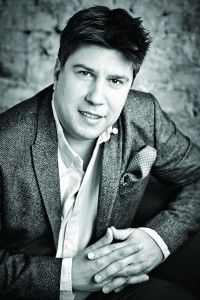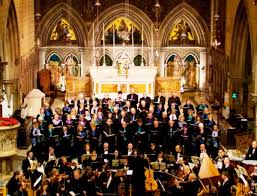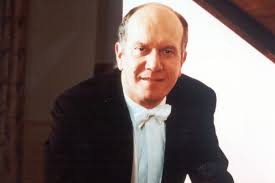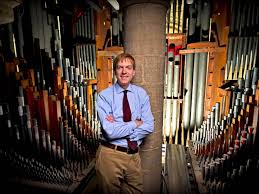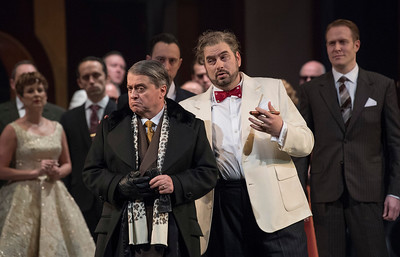CPE BACH – SOLO KEYBOARD MUSIC, Vol 32
Miklos Spanyi (Tangent piano)
BIS 2205 78’54
This massive survey of CPE Bach’s keyboard music continues with the remaining pieces from the “fur Kenner & Liebbaber” collections featured in Vol 31. That recording was made on a clavichord. Here Miklos Spanyi produces some delightfully light and characterful sounds from a Tangent piano, a variant of the Fortepiano. There is a satisfying symmetry to the programme which alternates between a Sonata and a Rondo, three of each in total. An enjoyable stand-alone disc as well as a welcome expansion of this series.
CARL CZERNY – ORGAN MUSIC
Ian Quinn(organ), Miller Chapel, Princeton Theological Seminary, Princeton, NJ, USA
NAXOS 8.573425 75’11
For many of us the name of this composer brings back memories of early piano lessons with books of his studies. I was unaware that Czerny had also composed for the organ. This is an enjoyable and interesting collection consisting of a substantial Prelude & Fugue in A minor, and two sets of pieces – 20 Short Voluntaries for organ with obbligato pedal and 12 Introductory or Intermediate Voluntaries.
The style is typical of the 19th Century and some of the voluntaries were apparently intended for the English market.
JOHANN PACHELBEL – COMPLETE ORGAN WORKS II
Jurgen Essi, Michael Belotti, James David Christie (organs )
Stephanskirche, Simmern & Kilianskirche, Bedheim
CPO 777 557-2 (2CDs) 117’21
As is the case with so many composers there is a wealth of organ music from the pen of Johann Pachelbel that is rarely heard today. In this second volume of the complete organ works we have Christmas music from Das Kirchenjahr together with Psalmlieder III. As well as being a useful reference resource this collection is very suited to listening to as a programme in its own right. There are intricate passages, beautiful sustained lines and delicate and colourful registrations to be found as well as full-blooded movements such as the opening Toccata. The mix of organists and organists gives added interest to this release.
JAKOB PRAETORIUS / PAUL SIEFERT– COMPLETE ORGAN WORKS
Friedhelm Flamme (organ)
St Laurentius-kirche, Langwarden & Martin-Luther-Kirche, Schonhagen
CPO 777 959-2 (2 CDs) 138’48
Although it gives no indication on the sleeve the booklet states that this is Vol 14 of Organ Works of the North German Baroque. So much of this vast period of organ composition stands to be rediscovered. Here we hear the 11 pieces that remain by Praetorius and 17 by Siefert. There is also an extended chorale prelude by Jakob Kortkamp. A particularly enjoyable performance is to eb found at track 6 on the 2nd CD, Seifert’s Puer natusin Bethlehem – beginning with a particularly bombastic theme and followed by much more delicate registration. An interesting collection but maybe not one to be listened to in one sitting.
KENNETH LEIGHTON – COMPLETE ORGAN WORKS
Stephen Farr (organ), Chloe Hanslip (violin), Nicky Spence (tenor)
Organs of St Giles’ Cathedral, Edinburgh, Symphony Hall, Birmingham & St Paul’s, Knightsbridge
RESONUS RES10178 (3 CDs) 78’31, 53’16, 76’19
This comprehensive production is a further sign of Resonus’ commitment to producing significant recordings of lesser known music. Whilst Kenneth Leighton’s name is known in some circles recordings of his music are not always easy to come by, and so this set of the complete organ works is a very welcome release. The Missa de Gloria is one of the more substantial works presented here, together with Prelude, Scherzo & Passacaglia and Et Ressurexit (Theme, Fantasy & Fugue). More melodic in nature are the opening Six Fantasies on Hymn Tunes, most based on familiar hymn repertoire. Possibly the best known of the shorter works is Paean, a wonderfully celebratory burst. As well as all the solo organ compositions this set also includes These are the wonders, for organ and tenor and Fantasy on a chorale “Es ist genug” for organ and violin – an interesting and seldom heard combination. An extended set of Improvisations “De profundis” for solo harpsichord completes the final disc. Stephen Farr gives wonderful performances throughout. Once again a variety of organs adds interest to what is already a very valuable collection. Highly recommended.
O SING UNTO THE LORD – SACRED MUSIC BY HENRY PURCELL
St Thomas Choir of Men & Boys, Fifth Avenue, New York, USA
Concert Royal
John Scott (conductor)
RESONUS RES 10184 54’03
GABRIEL FAURE – REQUIEM
St Thomas Choir of Men & Boys, Fifth Avenue, New York, USA
Orchestra of St Luke’s
John Scott (conductor)
RESONUS RES 10174 58’14
These two CDs of more mainstream repertoire are also released by Resonus, continuing their output of fine recordings of the Choir of St Thomas, Fifth Avenue, under the leadership of the late John Scott. Both CDs make for repeated listening. The Faure CD also includes his other popular sacred works – Messe Basse, Ave verum corpus, Tantum ergo and Cantique de Jean Racine.
CLASSICAL VIENNA – Music for Guitar & Piano
James Akers (romantic guitar), Gary Branch (fortepiano)
RESONUS RES 10182 67’47
This is an interesting release from a historic angle – recreating the sound world of a bygone age combining the sounds of an 1826 fortepiano with guitar. This is one of the last recordings to be made at Finchcocks, now sadly no more. The programme is varied, including compositions by Mauro Giulani and Ferdinando carulli amongst others. The duo work well together and in fine solo performances. However, on a personal note, I’m just not that keen on the sound of the fortepiano. I am sure others will relish it.
SP

